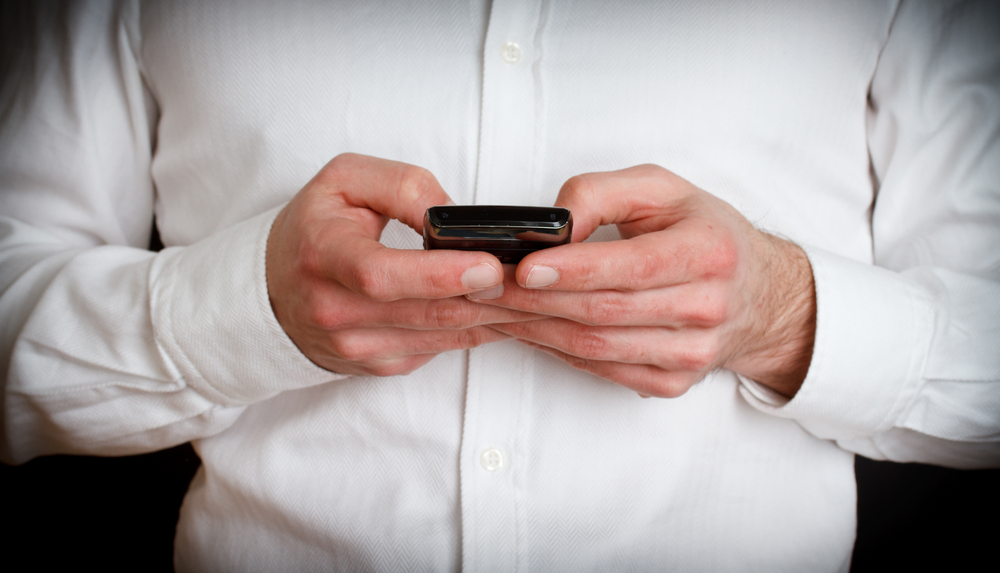

The SMS (Short Messaging Service) or a text has been around for nearly 25 years, and was once more widely used than mobile phone calls.
Users who were sending a SMS message had to content with a hard 160 character limit,which in turn led to the creation of chat acronyms (i.e. LOL) and text speak, in an effort to save space.
At its peak in 2011 a staggering 7.4 trillion SMS texts were sent in that year. But in 2012 the decline began as users began to favour free Instant Messaging (IM) alternatives including BBM, Skype, WhatsApp etc.
It is worth noting that the first SMS message was actually sent on 3 December 1992 in the United Kingdom.
The message was sent over the Vodafone network by a then 22-year-old communications engineer called Neil Papworth, who used his PC (back then mobile phones did not have keyboards) to wish his friend a “Merry Christmas” while he was at a party.
Papworth’s message heralded the era of the SMS, but it is worth remembering that most early GSM mobile phone handsets did not support the ability to send SMS text messages.
Indeed, it was Nokia who first introduced a SMS capability to its mobile phones in 1993.
But the origins of the SMS message goes further back than that, and the text message was actually invented long before mobile phones were an everyday tool.
Indeed, it was in the 1980s when the idea was first mooted by French and German standard bodies, who decided to add text messaging capabilities to what was eventually to become the GSM telephony standard.
The SMS message of course used the GSM network to transport its data.
In 1985 the development of the SMS was first proposed by German and French standard bodies to the GSM group, and the proposal was approved later that year.
The idea for the 160 character limit had come about in 1984, when the Friedhelm Hillebrand, a German engineer was sitting at his typewriter at his home in Bonn.
Hillebrand was influential in setting the GSM standard, and when he typed some random sentences and questions on his typewritter, and then tallied up the total characters used (including spaces and numbers), he discovered that nearly all the messages amounted to fewer than 160 characters.
Hillebrand then argued (successfully) that 160 characters was sufficient to express most messages succinctly.
The 1980s however was very early days for mobile phones, as most mobile telephones in that era tended to be car-based phone systems.
But as technology improved and mobile phones became less like a brick and (more importantly) less expensive, it triggered a mobile phone boom in the 1990s.
The glory days for the SMS message was the 1990s and 2000s. The SMS standard was eventually incorporated into new network standards such as 3G and 4G, but the advent of smartphones and all their associated apps meant that there were now more more favourable ways to send messages.
Some argue that frustration with the 160 character limit may have played a part, but soon as SMS usage began to decline, mobile operators began offering unlimited or at least very generous text bundles.
The SMS itself did evolve somewhat as users could go over the 160 character limit (which would count as a second SMS), and could even add pictures (MMS).
But fundamentally the problem was that consumers still had to pay to use a SMS (normally now included as part of a bundle), and people began seeking free messaging alternatives such as BBM, WhatsApp, Skype, Twitter and others.
That is not to say that the humble SMS is now a dead communication tool. It is still used by many people, and unfortunately marketing firms have cottoned to its reach and have been exploiting this service for years now.
The future of the SMS may be in question (at least for some people), as it remains to be seen how long SMS bundles will continue to be included in consumer mobile plans going forward.
This is reflected by the fact that people sent three times as many messages on Facebook’s Messenger and WhatsApp platforms in 2015 as they did via SMS. Indeed, those two Facebook messaging platforms for example processed 60 billion messages a day, almost three times the 23 billion SMS messages that were sent daily in 2015.
So will savvy mobile users of tomorrow dispense of their SMS messaging plan altogether, in an effort to extract more mobile data from their operator? Time will tell…
Back to more modern mobile systems: try our Android in 2017 quiz!
Nine EU countries led by the Netherlands push European Commission for follow-up to 2023 EU…
Former Cruise chief executive Kyle Vogt reportedly raises $150m for The Bot Company at $2bn…
Gotbit founder Aleksei Andriunin pleads guilty to manipulating tokens' trading volume and price after extradition…
ByteDance's largest US investors reportedly in talks for majority stake in US TikTok spin-off, with…
Apple reportedly reassigns Siri development to executive behind Vision Pro after acknowledging delays to much-hyped…
TikTok parent ByteDance, a major AI player in China, releases open technique for training LLMs…